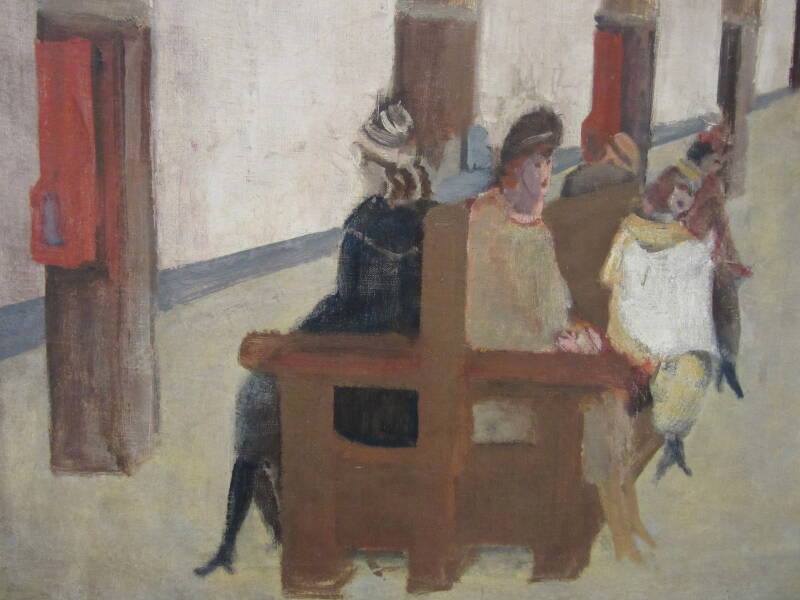It was my first time visiting the New-York Historical Society. The building itself was beautiful. It was grand and light. I walked around and around on the first floor exploring. Eventually, I stopped by New York, New York: The Elie and Sarah Hirschfeld Collection on the second floor, just past the staircase. This collection was filled with paintings of New York. Paintings of the empire state and subway stations. Some depictions were older and some were more modern.
There was one painting I couldn’t take my eyes off. It depicted a New York City subway station. In the painting, there were nine stylized figures, all together creating a scene of commuters. The painting was somewhat realistic, but the figures were elongated and compressed, making it all feel all the more unnatural. All of the figures were together, sitting close, but they were still apart. There was no connection between them.



I think it was that sense of unnaturalness that drew me in. From a distance, I could clearly see the figures. Each figure was isolated but at the same time they were all connected through the shared act of waiting for the train. But as I walked closer, the image changed. It all became a blur of color and texture. The figures that I saw from a distance dissolved into much more abstract planes of muted reds, yellows, and browns. It was coherent from a distance, but a bit chaotic and overwhelming up close.
Then I read who painted the image. It said Mark Rotkho, Untitled (The Subway) from 1937. This baffled me at first. Rothko is one of my favorite modern artists, and I could have never guessed this was his work. I learned that this 1937 painting is a part of a series of subway works that Rothko has made between the years 1937-40. His subway paintings were an exploration of atmospheres and mood before he found his original style.
After looking longer and thinking about what drew me to the painting, the more it began to make sense. The painting had this strange mix between calm and tension. There was something that felt off while it was peaceful. This emotion did not come through the figures, they were stiff and flat, lifeless almost. Instead it seemed as if all the emotion came from the colors. It was the colors that were carrying the emotions. What was holding movement and what made the painting feel alive was the brush strokes and the planes of paint.
This way of color holding all of the feelings felt like Rothko. The muted reds and browns, the separation of areas and shapes without using sharp lines. It made me think of his later works as an abstract expressionist artist, where emotion was entirely through color. Then, it became clear that even in his early paintings, Rothko was already learning how to make color feel human.


Add comment
Comments